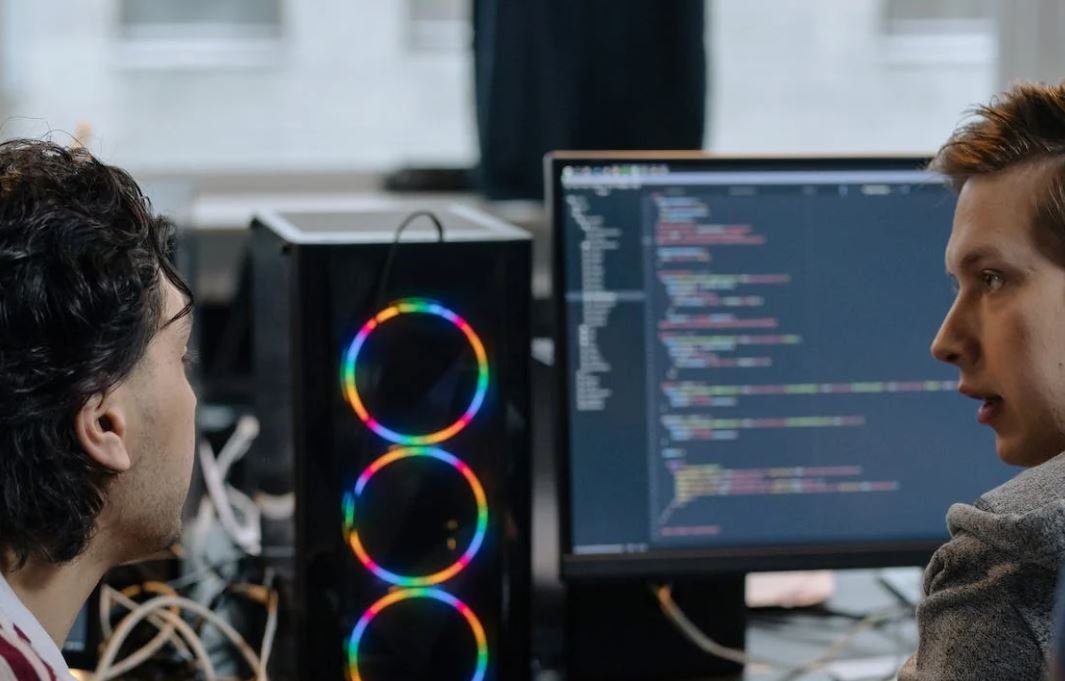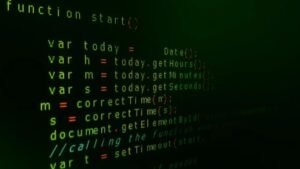Can I Deepfake Myself?
Deepfakes are synthetic videos or audios that use artificial intelligence to manipulate and replace the original content with impersonated content. They have gained significant attention due to their potential misuse and the ethical implications they raise. Many people wonder if they can deepfake themselves and create realistic but fake videos or audios that portray them in various scenarios. In this article, we will explore the concept of deepfaking oneself and the challenges it presents.
Key Takeaways:
- Deepfakes use artificial intelligence to manipulate and replace original content with impersonated content.
- Creating deepfakes of oneself raises ethical questions and potential misuse concerns.
- Deepfaking oneself requires extensive data and technical skills.
- It is important to be aware of the legal and social consequences of deepfaking.
Understanding Deepfaking
Deepfaking involves using artificial intelligence, specifically machine learning algorithms, to generate fake but highly realistic videos or audios. These algorithms analyze existing footage of a person, known as a source, and then replicate their facial expressions, voice, and gestures in a new video by superimposing the source’s features onto a target individual. This process requires a large amount of training data and technical expertise to create convincing deepfakes.
Creating deepfakes involves analyzing existing footage to replicate facial expressions, voice, and gestures onto a target individual.
Challenges of Deepfaking Yourself
While deepfaking oneself may seem appealing, it poses several challenges and concerns:
- **Extensive Data Collection**: To create a convincing deepfake of yourself, you would need a vast amount of video and audio content as training data, which may not be easily accessible.
- **Technical Expertise**: Deepfaking requires specialized knowledge of machine learning algorithms and computer vision to accurately manipulate and generate realistic content.
- **Ethical Considerations**: Deepfakes have the potential to be misused for malicious purposes, such as spreading misinformation or impersonating others, raising serious ethical concerns.
- **Legal Consequences**: Deepfakes can violate privacy rights, intellectual property laws, and even lead to defamation or identity theft, which can have serious legal ramifications.
Realistic Expectations
It is important to set realistic expectations when considering deepfaking yourself. While the technology has advanced significantly, creating convincing deepfakes of oneself remains a complex and resource-intensive task. Achieving highly realistic results without professional assistance and extensive training can be challenging.
Creating highly realistic deepfakes without professional assistance and extensive training can be challenging.
Exploring the Legality
The legality of deepfakes varies depending on the jurisdiction and context. In many countries, using deepfakes for non-consensual pornography, defamation, or other malicious purposes is illegal. Even if used with consent, deepfakes may still be subject to legal scrutiny, especially when involving public figures or commercial applications.
| Legal Considerations | Explanation |
|---|---|
| Non-consensual Use | Using deepfakes without the consent of the individuals involved is generally illegal and may violate privacy laws. |
| Defamation | Creating and disseminating deepfakes that harm someone’s reputation can lead to legal consequences under defamation laws. |
| Identity Theft | Deepfakes that impersonate someone for fraudulent purposes can result in criminal charges for identity theft. |
Protecting Against Deepfakes
To protect yourself from potential deepfake threats, consider the following measures:
- **Awareness**: Stay informed about deepfake technology and its capabilities to better identify potential fake content.
- **Secure Your Data**: Be cautious about sharing personal videos or audios online, as they can be used as training data for creating deepfakes.
- **Enable Two-Factor Authentication**: Use additional security measures, like two-factor authentication, to protect your online accounts from being compromised.
| Preventing Deepfake Threats | Explanation |
|---|---|
| Stay Informed | Being aware of deepfake technology helps in identifying potential fake content. |
| Protect Personal Content | Being cautious about sharing personal videos or audios online reduces the availability of training data for deepfake creators. |
| Use Additional Security Measures | Implementing two-factor authentication enhances the security of online accounts and reduces the likelihood of being hacked. |
Final Thoughts
While deepfaking yourself may seem intriguing, it is crucial to consider the ethical implications, legal consequences, and technical challenges involved. Additionally, it is important to be aware of the potential misuse of deepfakes and take steps to protect yourself and others from its harmful effects.
Deepfaking yourself should be approached with caution, considering the ethical, legal, and technical considerations.

Common Misconceptions
Misconception: Deepfaking yourself is easy and anyone can do it
One common misconception about deepfaking is that it is a simple process that anyone can easily do. However, this is far from the truth. Deepfaking involves complex algorithms and advanced machine learning techniques that require expertise in artificial intelligence and image processing.
- Deepfaking requires knowledge of programming languages such as Python and frameworks like TensorFlow.
- Creating high-quality deepfake videos demands extensive computational resources.
- It takes time and practice to master the techniques and tools used in deepfaking.
Misconception: Deepfakes are always used maliciously or for illegal activities
Another misconception is that deepfakes are solely used for nefarious purposes, such as spreading misinformation or creating non-consensual adult content. While there have been instances of deepfakes being used maliciously, this technology has many legitimate applications as well.
- Deepfakes are used in the entertainment industry to recreate deceased actors or to achieve special effects.
- Researchers utilize deepfakes to improve facial recognition algorithms and enhance computer vision systems.
- Deepfake technology has potential in medical fields for diagnosis and treatment planning.
Misconception: Deepfake videos are always easy to spot
Many believe that it is easy to identify a deepfake video as they assume there would be noticeable visual artifacts or inconsistencies. However, deepfake technology has advanced significantly, and it is becoming increasingly difficult to detect fake videos with the naked eye.
- Deepfakes can now incorporate realistic facial expressions and movements, making them visually convincing.
- Sophisticated algorithms and neural networks are employed to remove or reduce visual inconsistencies.
- Some deepfake videos have even fooled forensic experts.
Misconception: Deepfakes are only created by skilled individuals or organizations
There is a misconception that deepfakes are exclusively created by highly skilled individuals or sophisticated organizations. While expertise can contribute to the creation of high-quality deepfakes, there are also user-friendly software and tools available that make it accessible to a wider audience.
- There are online platforms and mobile apps that allow users to create simple deepfakes without technical knowledge.
- Open-source projects and tutorials are available to assist people in learning and experimenting with deepfake technology.
- However, producing professional-grade deepfakes still requires substantial expertise and resources.
Misconception: Deepfakes are inevitable and cannot be stopped
While it is true that deepfake technology poses challenges in terms of misinformation and privacy, it is a misconception to believe that it is entirely uncontrollable. There are ongoing efforts to develop detection methods and countermeasures against deepfakes.
- Researchers and technologists are actively working on improving deepfake detection algorithms.
- Collaborative efforts between tech companies, governments, and academia aim to prevent the misuse of deepfake technology.
- Public awareness campaigns are being conducted to educate users about the risks associated with deepfakes.

The Rise of Deepfake Technology
In recent years, the advancements in artificial intelligence have given rise to a concerning phenomenon known as deepfakes. These computer-generated images, videos, and audios are created using deep learning techniques and have the potential to deceive and manipulate viewers. In this article, we explore various aspects of deepfakes and answer the question, can I deepfake myself?
The Power of Deepfake Manipulation
Deepfake technology has the ability to alter the face, voice, and even body movements of a person to create a convincing fake. The following table showcases some startling statistics related to the impact and consequences of deepfake manipulation.
| Statistics on Deepfake Manipulation | Details |
|---|---|
| Percentage of people who believe they can identify deepfake videos | 55% |
| Number of reported cases involving deepfake extortion | Over 1,000 |
| Estimated loss in revenue due to deepfake-related fraud | $250 million |
| Percentage increase in the use of deepfakes for malicious purposes | 300% |
Deepfake Detection Techniques
To combat the spread of deepfake content, researchers and technology companies have developed detection methods. The table below highlights some of the methods employed to identify and verify deepfake media.
| Deepfake Detection Techniques | Accuracy |
|---|---|
| Facial Analysis | 86% |
| Voice Analysis | 94% |
| Metadata Analysis | 78% |
| Deep Neural Networks | 92% |
The Legal Ramifications of Deepfakes
The creation and distribution of deepfake content raise a myriad of legal concerns. The table below sheds light on some notable legal cases and their outcomes in relation to deepfake technology.
| Legal Cases | Outcome |
|---|---|
| Deepfake Revenge Porn | Classified as a crime in various jurisdictions |
| Deepfake Political Video | Lawsuit filed for defamation and misleading information |
| Celebrity Deepfake Leaks | Increased privacy regulations and penalties for offenders |
Deepfaking in the Entertainment Industry
The film and entertainment industry has begun exploring the potential of deepfake technology for various creative purposes. The table below showcases some notable examples of deepfake usage in movies and popular culture.
| Deepfake Usage in Entertainment | Examples |
|---|---|
| Giving deceased actors new roles | Bringing back characters from past movies |
| Youthifying or aging actors | Creating different time periods within a story |
| Recreating iconic performances | Reliving memorable scenes with modern actors |
Deepfakes in Politics and Beyond
The utilization of deepfake technology in politics and other areas has raised ethical concerns and the potential for misinformation. The following table shows the impact and implications of deepfakes in various contexts.
| Implications of Deepfakes | Context |
|---|---|
| Manipulating political speeches and interviews | Eroding trust in public figures and elections |
| Creating fake news videos | Spreading misinformation and fueling social unrest |
| Impersonation of high-profile individuals | Potential for financial and reputational harm |
The Future of Deepfake Technology
As deepfake technology continues to evolve, its impact will likely grow. The table below presents some predictions and possibilities for the future of deepfake technology.
| The Future of Deepfakes | Predictions |
|---|---|
| Enhanced real-time deepfake video creation | Instant morphing and transformation capabilities |
| Audio-only deepfakes | Creating convincing fake voices without visual components |
| Integration with virtual reality | Immersive experiences with realistic avatars |
Safeguarding Against Deepfake Threats
To counter the potential risks of deepfake manipulation, various measures can be taken. The table below outlines different strategies and solutions to mitigate the impact of deepfakes.
| Countermeasures Against Deepfakes | Solutions |
|---|---|
| Public education and awareness | Educating individuals about the existence and implications of deepfakes |
| Technological advancements | Developing improved detection and verification methods |
| Legislation and regulations | Implementing laws to deter and penalize deepfake creators and distributors |
The Ethical Dilemma of Personal Deepfaking
While individuals may be tempted to deepfake themselves for various reasons, it is essential to consider the ethical implications of such actions. The following table explores some moral dilemmas associated with personal deepfake creation.
| Ethical Dilemmas of Personal Deepfaking | Dilemmas |
|---|---|
| Invasion of privacy | Potentially deceiving others without their consent |
| Identity theft | Using someone else’s likeness for personal gain |
| Contributing to wider deepfake proliferation | Supporting the normalization of fake media content |
Conclusion
Deepfakes present both exciting possibilities and serious concerns. While the technology can be harnessed creatively in the entertainment industry, its potential for malicious use raises ethical and legal challenges. Comprehensive detection techniques, public awareness, and regulatory efforts are necessary to safeguard against the dangers of deepfake manipulation. Ultimately, as individuals, we must consider the repercussions and ethical dilemmas surrounding personal deepfake creation to ensure responsible use of this emerging technology.
Frequently Asked Questions
What is deepfake?
Deepfake refers to the technique of using artificial intelligence (AI) to manipulate or superimpose existing images or videos onto someone else’s body or face. It involves creating realistic but fake media that can be difficult to distinguish from the real thing.
Can I deepfake myself?
Yes, it is technically possible to deepfake yourself using various deep learning algorithms and image manipulation tools. However, it is important to note that deepfaking yourself or others without proper consent can be unethical and potentially illegal in some jurisdictions.
Are there any legal implications of deepfaking myself?
Deepfaking yourself without the consent of others involved or for malicious purposes can potentially infringe upon privacy rights, defamation laws, or even result in identity theft. It is crucial to understand and abide by the laws and regulations of your jurisdiction before engaging in such activities.
What are the ethical concerns related to deepfaking myself?
Deepfaking yourself raises ethical concerns, especially when it involves deceiving others or spreading misinformation. It can be used to manipulate public opinion, harass individuals, or invade someone’s privacy. It is important to consider the potential harm and consequences before engaging in deepfake activities.
How can deepfakes be detected?
Detecting deepfakes can be challenging as the technology continues to evolve. However, various methods and tools are being developed to identify signs of manipulation, such as inconsistencies in facial expressions, image artifacts, or unnatural movements. Researchers and tech companies are actively working to improve detection techniques.
Is deepfaking always used for malicious purposes?
No, deepfaking is not always used for malicious purposes. It can also be employed for entertainment, artistic creations, or educational purposes. However, it is crucial to use deepfake technology responsibly, with proper consent, and adhere to ethical guidelines to prevent misuse.
Are there any legitimate uses for deepfaking myself?
While deepfaking yourself can carry potential risks and ethical concerns, there may be legitimate uses in certain contexts. For example, it can be used in films, visual effects, or as a form of expression in art. However, it is essential to ensure that its usage aligns with ethical standards and legal requirements.
What are the social implications of deepfaking myself?
Deepfaking yourself can have significant social implications. It can contribute to the spread of misinformation, the erosion of trust, and the creation of fake news. It is crucial to be cautious when consuming media that may be deepfaked and to promote media literacy to help mitigate the negative impact of deepfakes.
Are there any regulations on deepfakes?
Several countries have started introducing or considering legislation to regulate deepfakes. These laws aim to address the potential threats, such as the spread of disinformation and violation of privacy rights. However, the legal landscape around deepfakes is still evolving, and it is important to stay updated on the laws in your jurisdiction.
How can I protect myself from deepfake manipulation?
To protect yourself from potential deepfake manipulation, it is advisable to be cautious when sharing personal information online, avoid sharing sensitive images or videos, and regularly update privacy settings on social media platforms. Staying informed about the latest developments in deepfake detection techniques can also be helpful in identifying potential deepfakes.




